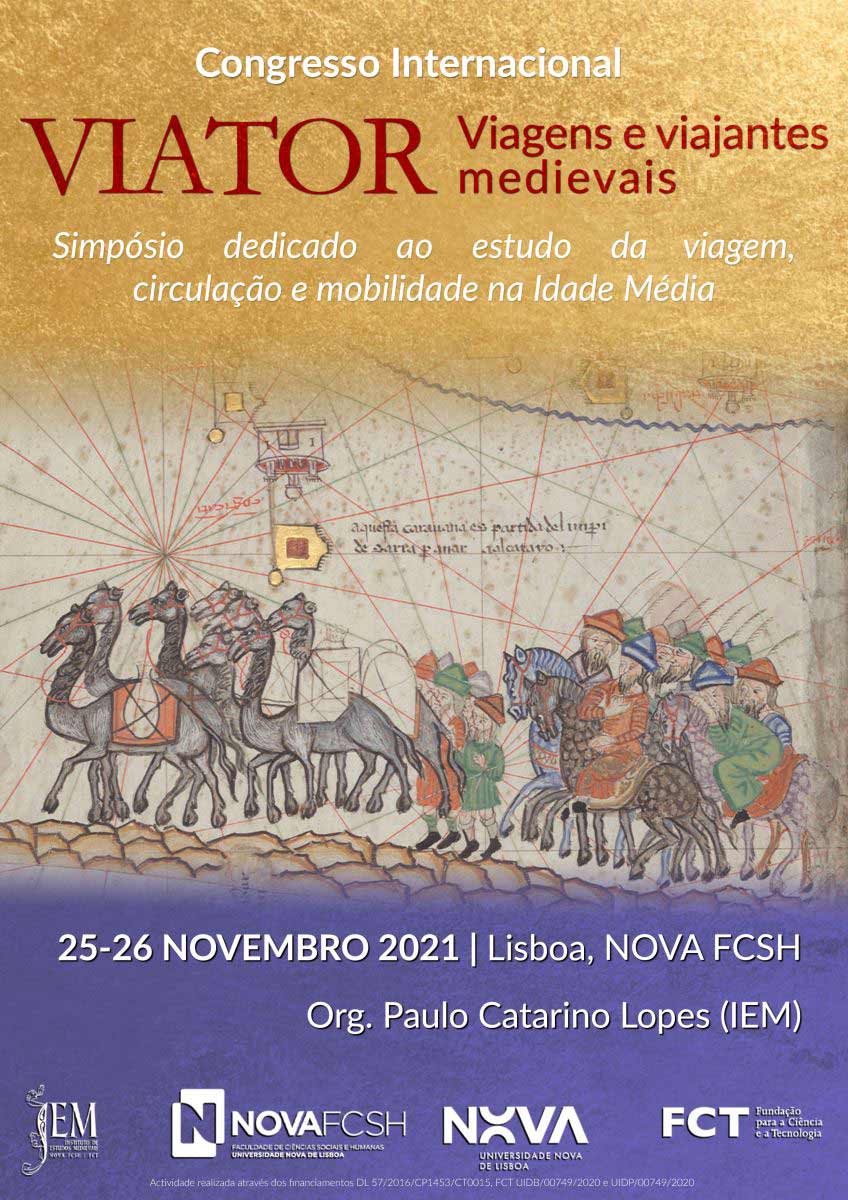VIATOR International Congress – Symposium dedicated to the study of travel, circulation and mobility in the Middle Ages
25.11.2021
Zoom sessions

Often seen as a time of stagnation, isolation and rupture, when the immobility deriving from interruptions to trade along land and sea routes was the key conditioning factor, the Middle Ages has literally been “underestimated” by certain schools of thought that conceive these centuries as a period of generalised regression, something that simply happened in the midst of two glorious epochs: Classical Antiquity and Modernity.
However, in recent years, historiography has been deconstructing this prejudice through critical and multidisciplinary analysis of the sources and bringing to light a clear reality: the Middle Ages, across its extensive duration of centuries, was a time of widespread circulation and mobility, led by immense socialisation among those following such paths.
There were naturally many and marked difficulties, particularly in terms of conditions, means and safety, factors that were able to make travelling a lengthy process. However, the poorly developed support infrastructures and the almost generalised absence of amenities were never insurmountable obstacles to accomplishing long or short distance itineraries as well as to establishing travel routes. The main factor for taking into consideration is that travel, as simple and as daily as it was, was never regarded as trivial. Regardless of the destination or the cause, it was always approached with zeal and purpose, including at the spiritual level.
The travel practices of the medieval world took on very different contours, both in terms of experiences and motivations – diplomacy, pilgrimage, war, trade, religious affairs, noble marriages, escaping from justice, exile, migration, searching for knowledge, among many other reasons – and in terms of the resulting multifaceted written production and the consequent reception by a reading public always eager for news (see the case of imaginary journeys and the so-called desk travellers). Such strands, after all, unequivocally turn medieval man into a Homo Viator.
Under the central theme of travel, circulation and mobility in the Middle Ages, this scientific meeting includes a wide range of sub-topics that generate a deeper understanding of the dynamic and diverse ways in which medieval society, across its various different dimensions, related to the usage of land and sea routes.
ORGANISATION
Institute of Medieval Studies– NOVA-FCSH
SCIENTIFIC COORDINATION
Paulo Catarino Lopes (IEM – NOVA FCSH)
SCIENTIFIC COMMISSION
Amélia Aguiar Andrade (IEM – NOVA FCSH)
Yvonne Hendrich (Johannes Gutenberg-Universität Mainz)
Paulo Catarino Lopes (IEM – NOVA FCSH)
Susani Silveira Lemos França (UNESP – Campus de Franca)
Maria João Branco (IEM – NOVA FCSH)
Jurgen Pohle (CHAM – NOVA FCSH)
Catarina Barreira (IEM – NOVA FCSH)
Vânia Leite Fróes (Universidade Federal Fluminense)
Fábio Barberini (IEM – NOVA FCSH)
Iria Gonçalves (IEM – NOVA FCSH)
FINANCING
This scientific meeting is financed by national funding through FCT – Foundation for Science and Technology, I.P., under the Transitional Rule – DL 57/2016/CP1453/CT0015, and the Strategic Project of the Institute for Medieval Studies – funding UIDB/00749/2020.
